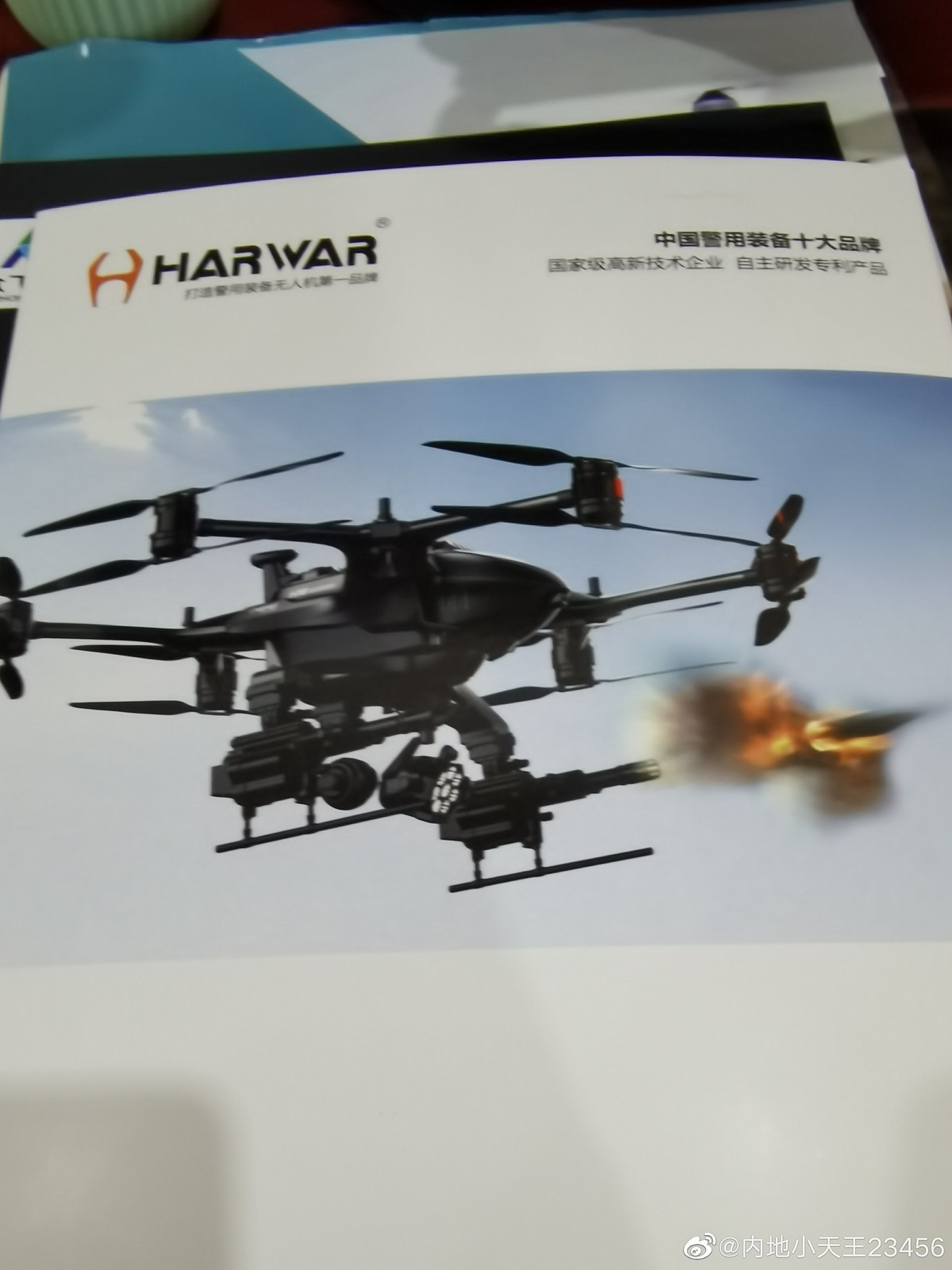Brochures from the 2020 Changchun International UAV Expo. I did some rough translation where needed. Please feel free to correct and add to it.



This feels so Skynet.
Brochures from the 2020 Changchun International UAV Expo. I did some rough translation where needed. Please feel free to correct and add to it.



During the tests, drones were released from truck-based, 48-unit launchers and from airborne helicopters. The drones were rapidly and simultaneously deployed while the transport platforms were on the move, and the system can launch as many as 200 drones in one go, the report said.
After being released, the drones switched between different formations and conducted reconnaissance and attack missions on ground targets, the report said, noting that the drones look similar to China's domestically made CH-901, which is about 1.2 meters long, has a top speed of 150 kilometers an hour and a combat radius of 15 kilometers. Also known as a loitering munition, this kind of drone functions just like a normal drone in reconnaissance missions, but can turn itself into a cruise missile and launch suicide attacks when it receives the order.
Brochures from the 2020 Changchun International UAV Expo. I did some rough translation where needed. Please feel free to correct and add to it.



You are over estimating the system. Look at what going on with Armenia and Azerbaijan. They use drones to target soldiers directly. If we say $10k for one man’s life, is it still too expensive?
Havwar actually has a section on their website dedicated to Tomahawk UAV modules. I think the red balls are either for fire fighting or tear gas bombs for crowd disposal, can't remember which.I can't read it because it is both blurry and my Chinese is not great. However, the Harwar EMS drone, what the heck is it carrying? Looks like apples. Are they supposed to be first aid kits or something? I can only read something about being a top police equipment maker.
Interesting and totally valid point. I think the pay of an average NATO private is $25,000 (US Army is much lower). I was told that total investment in a soldier's boot camp training and kit is something like $50,000 (Again, NATO standards). So from what you pointed out, probably it is not unreasonable from that measure.
Although, as pointed out by @plawolf, artillery is much cheaper.
Which kind of brings it back to the idea of smart mines.
As a lifecycle advantage, they would be easier to clear as well. Think of the cost of UXO/after-conflict mine clearance both in dollars and human life.
That may be the military's investment into a human soldier but lets not forget that the military also externalizes costs onto the rest of society. Lots of investment went into raising/developing that person. Also a soldier in high risk is likely to be in the prime of their life with much value potential to society. A human life is actually quite valuable to civil society from a pure economic point of view. Eliminating a human reduces strategic capabilities.I can't read it because it is both blurry and my Chinese is not great. However, the Harwar EMS drone, what the heck is it carrying? Looks like apples. Are they supposed to be first aid kits or something? I can only read something about being a top police equipment maker.
Interesting and totally valid point. I think the pay of an average NATO private is $25,000 (US Army is much lower). I was told that total investment in a soldier's boot camp training and kit is something like $50,000 (Again, NATO standards). So from what you pointed out, probably it is not unreasonable from that measure.
Although, as pointed out by @plawolf, artillery is much cheaper.
Which kind of brings it back to the idea of smart mines.
As a lifecycle advantage, they would be easier to clear as well. Think of the cost of UXO/after-conflict mine clearance both in dollars and human life.
^Somehow I doubt that a private earning $25,000 a year is likely to become a scientist or business owner.
Havwar actually has a section on their website dedicated to Tomahawk UAV modules. I think the red balls are either for fire fighting or tear gas bombs for crowd disposal, can't remember which.
There are actually heaps of non-military payload modules for that UAV.
